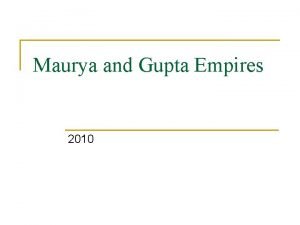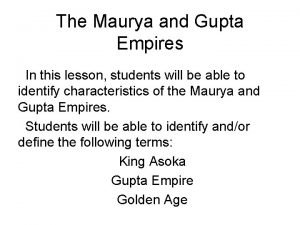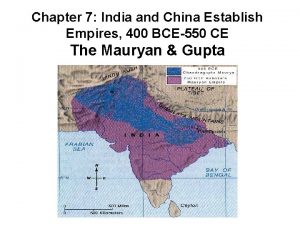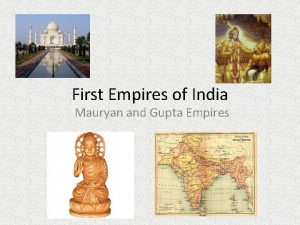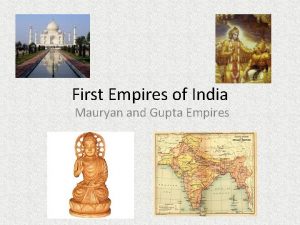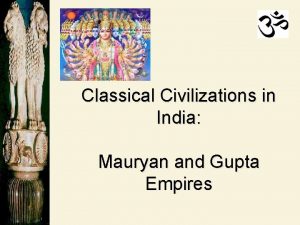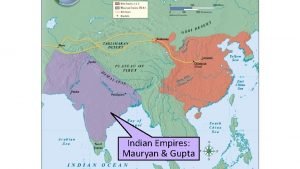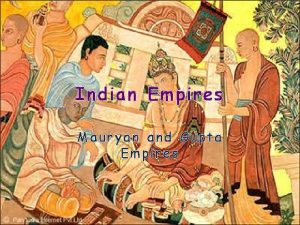MAURYAN AND GUPTA EMPIRES South Asian Civilizations India







- Slides: 7

MAURYAN AND GUPTA EMPIRES South Asian Civilizations

India prior to the Mauryans ◦Ruled by the Persians (Darius I) ◦Ruled by the Greeks (only about two years) ◦Chandragupta Maurya unites northern India for the first time

Mauryan Government under Chandragupta ◦ Divided into provinces and districts ◦ Advisor, Kautalya, writes a detailed political handbook ◦ Administration ◦ Taxes ◦ Foreign relations ◦ Uses spies (and prostitutes) as informants ◦ Perhaps abdicated to become a monk

Ashoka (r. 268 -232 BCE) ◦ Expanded the empire ◦ Brutal early in his rule ◦ Converts to Buddhism and ends his violent ways ◦ Encourages others to convert ◦ Builds monasteries ◦ Achievements: ◦ Tax collecting system ◦ Built roads & encouraged trade ◦ Ended slavery ◦ Recorded history of his empire ◦ Promoted peace in the region

Mauryan Decline and Legacy Decline ◦ Falls about 50 years after Ashoka’s death ◦ Army becomes ineffective ◦ Neighboring empires fight for control Legacy ◦ TRADE! ◦ Goods: silk & spices (from China) ◦ Ideas: art (from Rome and Greece)

Gupta Empire – The Golden Age of India ◦ Smaller than Mauryan ◦ Not an elaborate bureaucracy ◦ Lets locals control & pay tribute ◦ Science and Math ◦ Discovers zero ◦ Plastic surgery ◦ Earth is round and rotates on its axis ◦ Trade – merchants (and others) are able to travel across the area without fear of being attacked

Decline of the Gupta ◦ Invasions by the White Huns ◦ Fell in to regional kingdoms until 16 th c. CE

